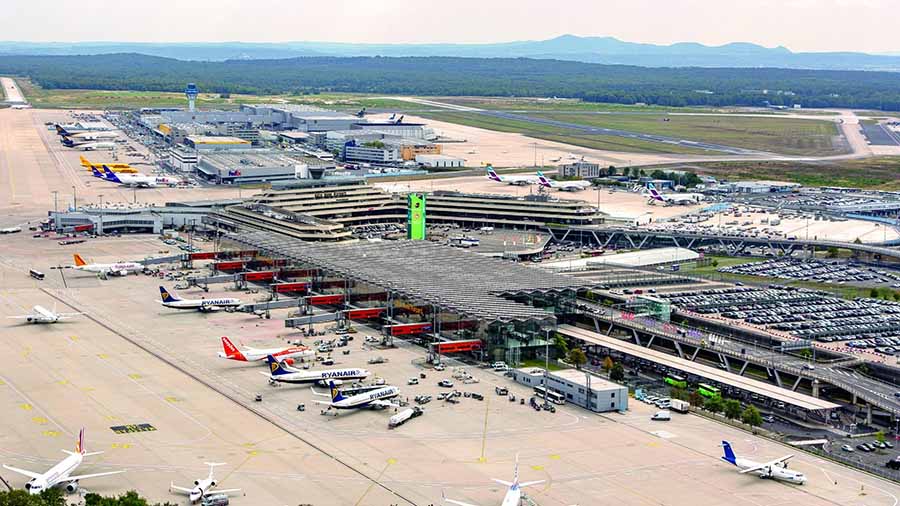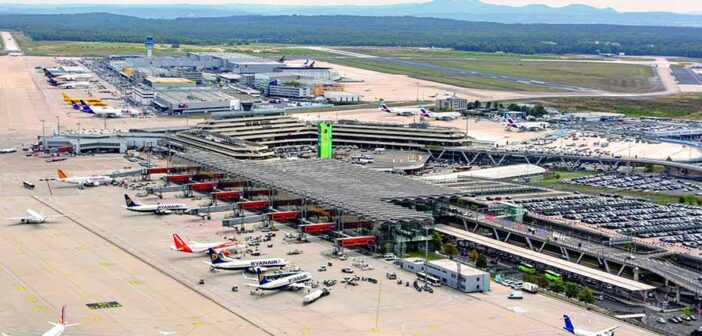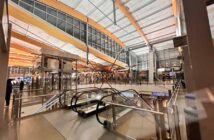
The passenger experience at Cologne Bonn, officially named Flughafen Kِln/Bonn Konrad Adenauer or CGN, is shaped by its manageable size and modern amenities, handling around 12 million passengers annually across 108 destinations in 34 countries. Serving as a hub for Eurowings and a base for low-cost carriers like Ryanair, as well as full-service airlines such as Lufthansa and Turkish Airlines, the airport ensures a smooth journey with clear signage and a functional layout. Terminal 1’s distinctive 1970s U-shaped design, with its neon-lit piers, and Terminal 2’s sleek glass-and-steel structure create an approachable atmosphere, enhanced by local touches like a Cologne-themed brewery.
Accessing the airport from Cologne’s city centre, 15 kilometres away, or Bonn, 16 kilometres away, is straightforward. The S-Bahn (S19) and Regional-Express (RE6, RE8) trains connect Cologne Central Station to the airport’s underground railway station in just 15 minutes for about £2.50, with services running every 20 minutes on weekdays. Bus line SB60 links Bonn’s main station to the airport in 30 minutes for £7.20, while taxis cost around £25-£35 to Cologne and £40 to Bonn, depending on traffic. Car rental agencies like Sixt and Hertz operate on-site, and parking options include short-term garages (P1, P2, P3) at £3 per hour and long-term lots (P-North, P-East) starting at £39 per week, bookable online.
The airport’s layout features two terminals, Terminal 1 and Terminal 2, connected by a 10-minute landside walkway or a free shuttle bus running every 10-15 minutes. Terminal 1, primarily for Eurowings and Lufthansa, has a central hall with check-in desks, shops, and piers B and C, while Terminal 2, used by Ryanair and others, offers a modern setup with eight jet bridges and bus-boarding stands. The terminals are not connected airside, so passengers transferring between them must clear security and immigration, which can add time. The airport’s three runways support its 24/7 operations, making it a key cargo hub for FedEx, UPS, and DHL.
Delays can arise during peak morning and evening hours or due to winter weather affecting the region. Limited gate availability and security queues, particularly in Terminal 1, may slow progress, so arriving two hours early for domestic flights and three for international is advisable. Baggage handling can occasionally lag, especially for international arrivals, and travellers should check flight information screens for gate changes. Fast Track lanes in both terminals, available for eligible passengers, help expedite security.
Dining options cater to diverse tastes, with Terminal 1 offering local flavours at the Früh bis Spنt brewery, serving freshly tapped beer and hearty German dishes, alongside fast-food outlets like McDonald’s and Starbucks. Terminal 2 features La Piazza for Italian cuisine and Deli Bros Café for quick bites. Most eateries close by 10 pm, so late-night travellers may rely on vending machines. Retail includes Heinemann Duty Free in both terminals, a Haribo store, and fashion boutiques like Esprit and Marc O’Polo, with a supermarket in Terminal 1 for essentials. A visitors’ deck on Terminal 1’s roof offers plane-spotting opportunities.
Facilities enhance comfort, with free unlimited Wi-Fi via the “AIRPORT FREE WIFI” network, charging stations throughout, and an interfaith prayer room in Terminal 2. Accessibility features include ramps, lifts, and German Red Cross assistance for passengers with reduced mobility, bookable 48 hours in advance. Lounges like the Lufthansa Lounge and Sky Lounge in Terminal 1 provide relaxation for a fee, while a pharmacy, medical services, and ATMs are available. Nearby hotels, such as Leonardo Royal Hotel Bonn Airport, cater to layovers.
On-time performance is generally reliable, supported by the airport’s three-runway system and 24/7 operations, though peak congestion and weather can impact schedules. Connections are straightforward within each terminal, but transfers between Terminal 1 and Terminal 2 require landside transit, adding 15-20 minutes due to security and customs. International passengers should factor in extra time for immigration.
Cologne Bonn Airport combines efficiency with local character, offering travellers a functional and pleasant experience. With robust transport links and ongoing upgrades, including 17 new bars and restaurants by mid-2025, it remains a key gateway to North Rhine-Westphalia and beyond.
Ryanair
Ryanair operates flights to Dublin on Wednesdays, Fridays, and Sundays from Terminal 1, with check-in desks typically in the main check-in area (desks 1–20). Passengers should check the airport’s flight timetable or screens for exact assignments.
Flights to Ireland (Dublin) usually depart from Terminal 1, Schengen gates (gates B20–B40 or C10–C20). Specific gates are confirmed on departure boards.




